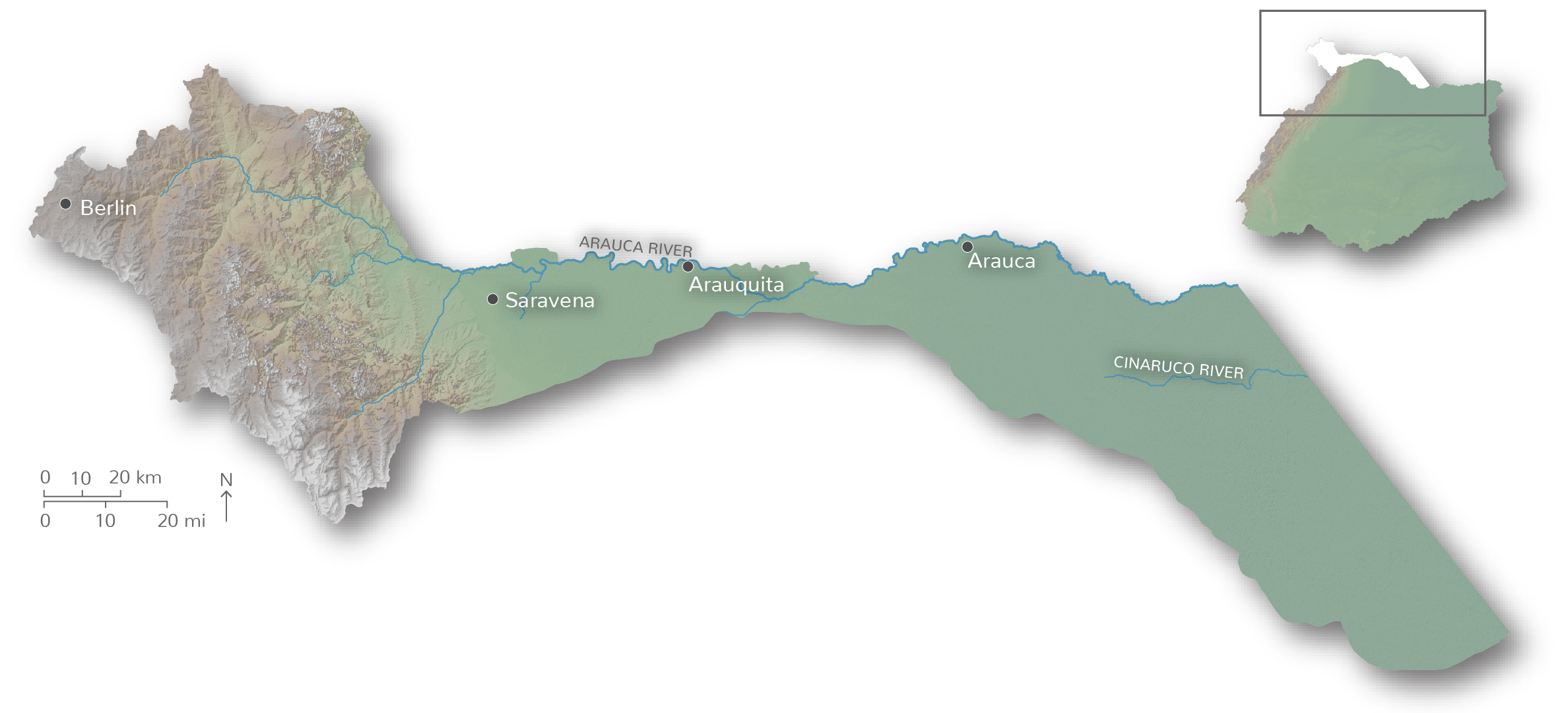
Characteristics of the Arauca River Basin
The Arauca River is the northernmost tributary of the Orinoco River Basin. It originates in the Andes and much of its 1,001 km length forms the border between Colombia and Venezuela. While the Arauca River Basin is dominated by flooded savannas, it is also home to seasonal savannas, paramos, and Andean rainforest. Key threats within the basin include rising levels of deforestation, agriculture, petroleum infrastructure, and chemical spills. The Arauca River Basin Report Card covers the Colombian portion of the rivers which forms the headwaters for the Venezuelan Cinaruco and Capanaparo Rivers.
The river connects two nations and faces challenges

The Arauca River Basin received an overall C grade (51%). Of the nine indicators assessed, results varied widely, with generally better results for indicators representing the categories Ecosystems & Landscapes and Water. Lower scores were received by indicators representing Biodiversity, People & Culture, and Management/ Governance, with the indicator of most concern being mining in sensitive ecosystems. However, these results are limited as much is still unknown about this important basin. For example, no water quality sites in the basin are currently included in IDEAM’s National Network Monitoring Program. Also, many of the lower scoring categories previously mentioned also had the fewest indicators due to data limitations.

